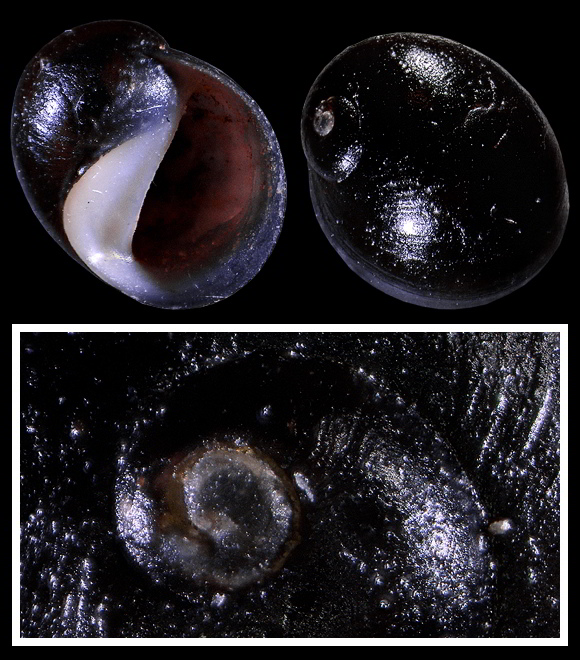(G. B. Sowerby I, 1836)

Original taxon: Neritina jordani. Synonyms: euphraticus, mesopotamicus, michonii, niloticus…
The species is very close to macri (Sowerby II, 1849), but differs from the later by its « tendancy to contract in the middle of the last whorl » (Sowerby II, about the differences between macri and jordani).
A specimen from Tiberias area, on the western shore of the Sea of Galilee, E. Israel. 5,5mm. Henk K. Mienis legit (IL).
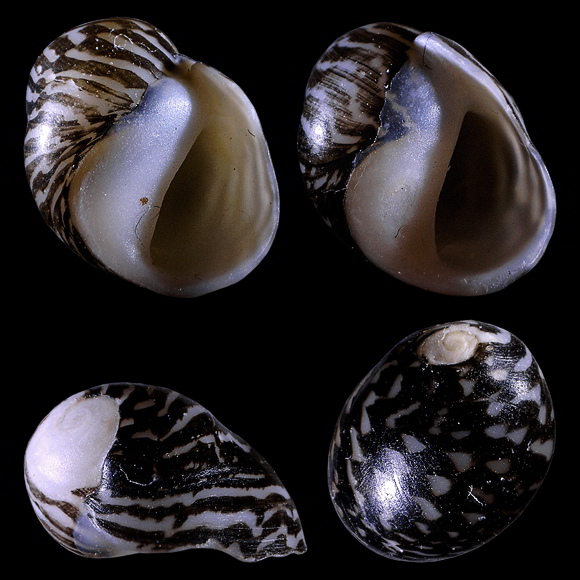
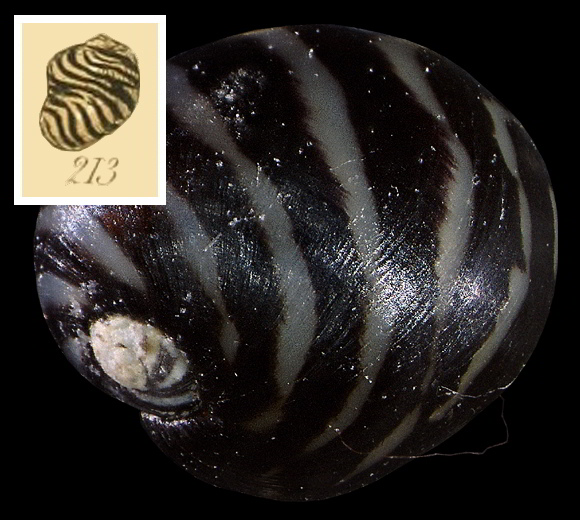
Sowerby’s Conchological illustrations only gave a picture, and no description. It was not until the second volume of the Thesaurus conchyliorum that an explanation appeared, complemented by a figure from the plate CIV (inset above): « Of a globose form, inclining to oval, with a tendency to contraction in the middle of the last whorl or nearer the upper part. » – op. cit. p.531.– This “contraction” is not conspicuous in most specimens. – Same spot. Young shell. 3mm.
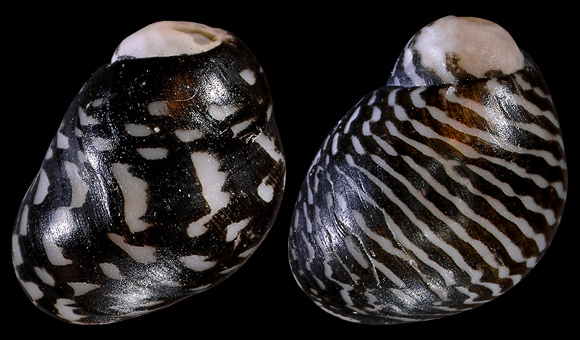
Collection R. Crnković (HR).
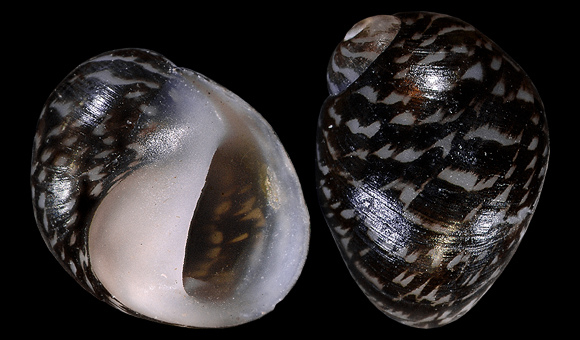
Collection R. Crnković (HR).
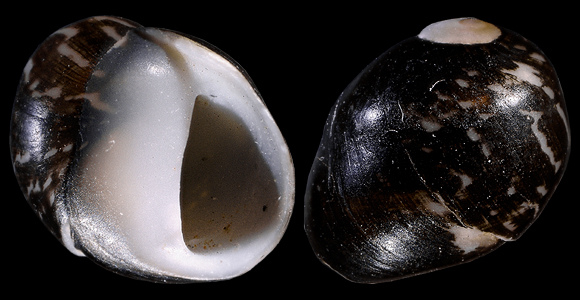
Collection R. Crnković (HR).
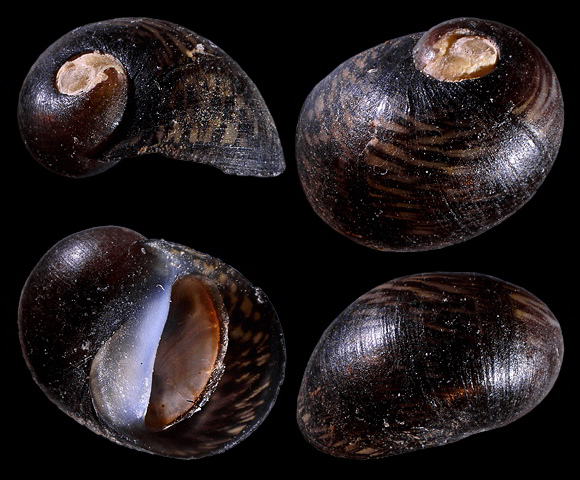
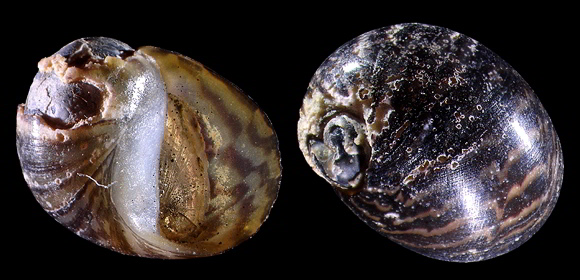
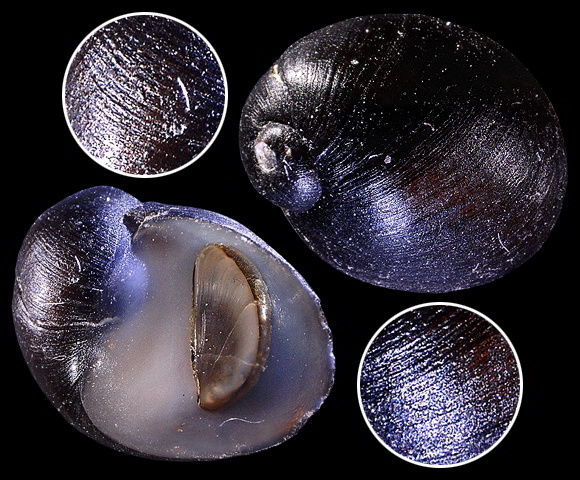
« This little Neritin, constant in its characters, is oval, semi-globular, transverse, very slightly striated transversely, while having the test criss-crossed with longitudinal streaks of an extreme delicacy. This shiny shell, covered with a uniform black epidermis, is formed by two and a half whorls, the upper two of which constitute a very small, tucked-in, and often corroded lateral spire. Its peristome is circular; its internal edge, compressed in front and very callous in the back, is whitish or brownish, depending on the individual, and sometimes it is tinged with a more or less pale yellow on the posterior side; its margin is straight, and its semicircular outer edge is sharp and blackish inside. The operculum of this new species, flat below, whitish and washed with black towards its anterior side, is bordered with a saffron red. » – J. R.. Bourguignat: Catalogue raisonné des mollusques terrestres et fluviatiles, Paris 1853, p.70.
A specimen from the pools of Sahne springs (Gan Hashlosha national park), Northern district, Israel. 6mm.
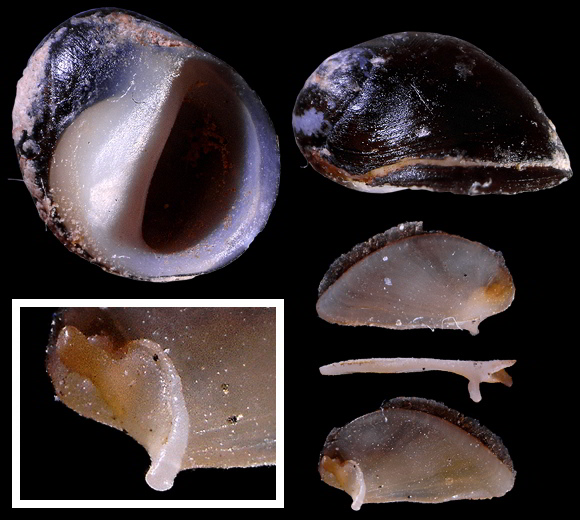
« Among the various Neritins of Syria, we can only compare our Michonii with the Neritina nitida of Parreyss, a species, moreover, which is only a variety of the Jordani of Buttler. We can nevertheless distinguish the Neritina Michonii from it, by its transverse shape, in no way globular, nor oval in the direction of the spiral axis; by its ever thinner test, its constantly smaller volume, its epidermis of a uniform black-brown and never streaked or smudged as in the Jordani; by its depressed spire, in no way slender, nor pyramidal, etc. Let us finish by saying that in Michonii, the external edge of the peristome never expands in the form of a wing, on the upper side, as in the Jordani, but continues its roundness, or on the contrary, sometimes even deepens in this place. Finally, the operculum of our species never presents the iridescent shade of the operculum of the Neritine of the Jordan. » – Ibid.
A specimen from Tiberias area, on the western shore of the Sea of Galilee, E. Israel. 6,2mm. The pseudoapophysis is huge.
